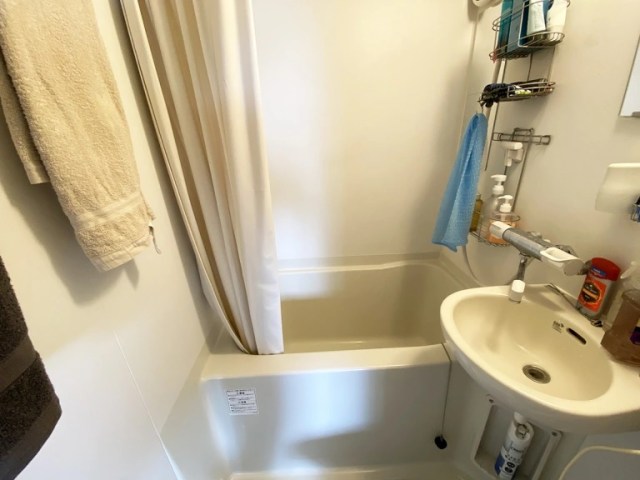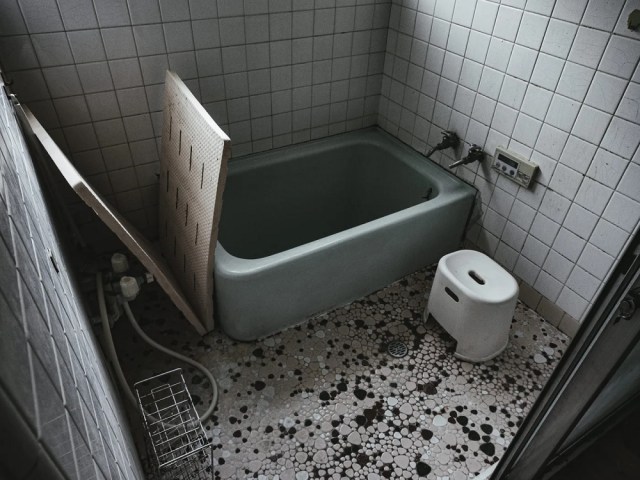Apartments with no bath or shower rising in popularity among young Tokyoites, report says

No bath, no problem?
When looking for an apartment in Japan, you can save a lot of money on rent if there’s some amenity or nicety you’re willing to do without. Choosing an above-ground-level unit in a building with no elevator, for example, or an apartment with just a basic toilet, not one of Japan’s fancy washlet models, can easily knock 10,000 yen or more off your monthly housing expenses.
But according to Japan’s TV Asahi news, some young Japanese people are going even farther than that, and looking for apartments without a bathtub or shower.
The financial appeal is significant. TV Asahi spoke with a 20-something Tokyoite living in a bath/shower-less studio apartment near Nerima Station, just a 10-minute train ride from downtown Tokyo, paying just 32,000 yen (US$245) a month. Another no-shower apartment dweller is within walking distance of Tabata Station on the Yamanote Line, the loop line that runs around the center of Tokyo, whose rent is almost as cheap, at 33,000 yen a month.
An apartment with no bathing facilities might sound like it’d exclude you from all but the most odor-accepting workplaces and social circles, but it’s actually not as much of an obstacle in Japan as it would be in many other countries. That’s because you can still find sento, or public bathhouses, in Japanese towns. They’re not nearly as common as they used to be, but in a city with as many people as Tokyo, sento haven’t completely disappeared. There’s even a website, Tokyo Sento Fudosan (“Tokyo Public Bath Real Estate”), that specializes in helping renters find no-bath apartments that are within a short distance of a public bath.
▼ A look at some public baths and no-bath apartments
According to Tokyo Sento Fudosan, it’s not necessarily economic hardship that’s causing people to seek out these low-cost, few-frill apartments. Instead, the realtor says, there’s an appeal to the retro atmosphere. No-bath apartments were much more common two or three generations ago, and some people see the old-school practice of gathering a bundle with your soap, shampoo, towel, and change of clothes, then walking to the sento for a bath as a relaxing ritual and life rhythm. There’s also the fact that while sento aren’t as fancy as full-fledged hot spring resorts, their multi-person tubs are still more spacious than what you could fit in a private apartment, and with sento themselves not as widely used as they used to be, odds are you aren’t going to have to share the public bath tub with all that many people at any given time, giving you the opportunity to stretch out and relax, giving your mind a break from the pressures and responsibilities you might feel if you were lounging about your own home.
▼ If your low-cost apartment has a bath that looks like this, it’s kind of tough to unwind and destress.

Of course, the lower cost of no-bath apartments is a benefit that can’t be ignored, and Tokyo Sento Fudosan says that the greater financial flexibility allows renters to put more money towards their hobbies, investments, or towards hitting savings targets.
Online reactions to TV Asahi’s report have been mixed, though. While many can see an upside to living this way, many others say it’s not something they’d want to do.
“I really can’t get behind trying to spin poor people’s poverty as a positive.”
“I think the proper way to frame this is there are people who can’t earn enough to spend money on their hobbies or save very much unless they live in an apartment with no bath.”
“This kind of lifestyle is only fun for a while at the start.”
“I always did want to live in an apartment like Ikkoku-kan from Maison Ikkoku [a Rumiko Takahashi anime/manga about the residents of an old, run-down apartment building with no bath].”
“I’m jealous of people who can get off of work early enough to go to the sento before it closes.”
“I absolutely have to have my own bath, toilet, refrigerator, and microwave.”
“I actually don’t need a bathtub, so I wish there were apartments with just a shower and no tub [a configuration that’s incredibly rare in Japan].”
“If someone made an apartment building with no showers, and also ran a sento and convenience store on the first floor of the building, I bet a bunch of people would want to live there.”
If you’re thinking of trying the no-bath apartment lifestyle in Japan, there are a couple of things to consider before signing your lease. As alluded to by one commenter, not all sento are open 24 hours. Traditionally they stay open late enough so that customers can come by after work, if you’re regularly doing night shifts, clocking a lot of overtime, or having drinks with friends on your way home, the local sento might be closed by the time you’re ready for a bath. Also, what’s a pleasant evening stroll to the bathhouse in good weather becomes a lot less appealing when it’s cold, raining, or snowing. Finally, the ordinary price for sento is 500 yen, so if you’re bathing every day (which is the cleanliness standard in Japan), that’s 15,000 yen a month you’ll need to budget.
On the other hand, even with the added sento expenses, you’ll probably be coming out ahead with your rent savings, have access to bigger and more varied baths, and never have to deal with the hassle of scrubbing a bathtub yourself. So if all that sounds good to you, living the no-bath apartment life actually is doable in Tokyo.
Source: Teleasa News via Hachima Kiko, YouTube/ANNnewsCH, Tokyo Sento Fudosan
Top image ©SoraNews24
Insert image: Pakutaso
● Want to hear about SoraNews24’s latest articles as soon as they’re published? Follow us on Facebook and Twitter!
Credit:

0 comments: